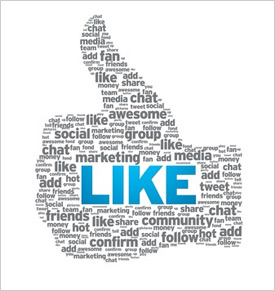 You might think there’s a hot new social media platform every few months. After a while they all run together, and it seems like they’re all best left to other people (and maybe even other businesses).
You might think there’s a hot new social media platform every few months. After a while they all run together, and it seems like they’re all best left to other people (and maybe even other businesses).
But are they? If you aren’t actively involved in decisions regarding your business’s social media presence, you might you miss out on something useful — something that could move your business forward with a fraction of the effort and time (and therefore money) of traditional networking and branding.
Social media marketing provides an affordable, high-return method to connect with potential customers and keep your brand in their thoughts throughout a longer sales process. The key is selecting the right platform to focus on. Here’s a glimpse at the most powerful social marketing platforms and how you can make the most of them for your business.
Why it’s worth it:
LinkedIn is the clear choice for B2B lead generation because it is mainly used for professional purposes. It also recently opened its content network to all users, allowing them to publish and share original content — a bold step that has encouraged many users to enhance their personal content marketing efforts. What performs well on this platform are catchy headlines, meaningful comments in groups, and original content.
Biggest weakness:
LinkedIn is a fundamentally closed network, which means that you can only interact with users who have mutually given each other permission to do so. Because of this fundamental privacy, your network will not grow without active networking. Other networks, on the other hand, provide engagement opportunities through communal hashtags and trending topics.
Bottom Line: If you’re looking to build a strong personal network based on real-world connections, LinkedIn networking (and possibly paid advertising) is a great time investment. It’s also the closest thing to actual face-to-face networking, so it’s a good social media entry point.
Why it’s worth it:
You might be thinking, “Facebook for B to B companies? That’s not right for us.” Facebook’s claim to fame is the fact that it is still the largest and most active social network in existence. No other platform offers the same reach in almost every demographic, and marketers are eager to take advantage of this benefit with targeted paid ads that can work for many business segments.
Biggest weakness:
Unfortunately, Facebook is having increasingly public struggles with its news feed algorithm and approach to marketing. Many marketers are finding that users who sign up for their updates do not see them, and Facebook is moving closer to a pay-only marketing platform. For a business with the budget, paid advertising might still be worthwhile. But if you enjoy Facebook for its free platform that allows you to access your fan base, your days are numbered.
Bottom Line: Facebook is the most popular social network, but not the most popular for B to B companies. It can still be effective because of its paid advertising potential.
Why it’s worth it:
Twitter is a large and growing communication platform, especially among 18-29 demographic. Though Twitter can be overwhelming at first, it offers plenty of opportunities to share your message and engage with users in new and exciting ways. The repetitive and cyclic nature of the platform means that you can target your messages for a variety of segments on a variety of topics. It’s high touch, but also high engagement, perfect for B2B-style conversation that leads to conversion.
Biggest weakness:
Being so popular in a younger demographic makes it harder for B2B businesses to make leads (though they are there — we promise!). If you’re targeting an older, more established population, then the people you’ll want to do business with likely aren’t engaged on this platform. But if you are targeting a younger crowd, you would do yourself a huge favor to invest in an engaging Twitter presence.
Bottom Line: Twitter is a platform that can be helpful for younger professionals to drive company awareness. It requires more time since the life of a tweet is so short, but because it’s an open network, anyone can read your updates.
Google Plus
Why it’s worth it:
Google Plus has the world’s most powerful search engine behind it — and the SEO benefits that come with it. These benefits are pushing thousands of businesses to the platform each month and as overall usage grows, so does adoption across each demographic. B2B businesses will see results in website traffic and in reach from pushing content updates on the platform.
Biggest weakness:
Google Plus is growing swiftly in the B2B market, but growing more slowly in the B2C market. The best way to know if it’s right for your business is to do your research, then work carefully to take advantage of all that Google Plus can offer.
Bottom Line: Known for a more technical audience, Google Plus might be a good option for a manufacturer or technical industry. It’s good for SEO but still lags behind LinkedIn in terms of active participation and engagement.
Social media isn’t typically the most important or interesting part of business, but there’s proven value in investing in a social media presence as part of a B2B inbound marketing program. Do your homework, commit to the right platforms for your business, and let us know which are best for your business.
